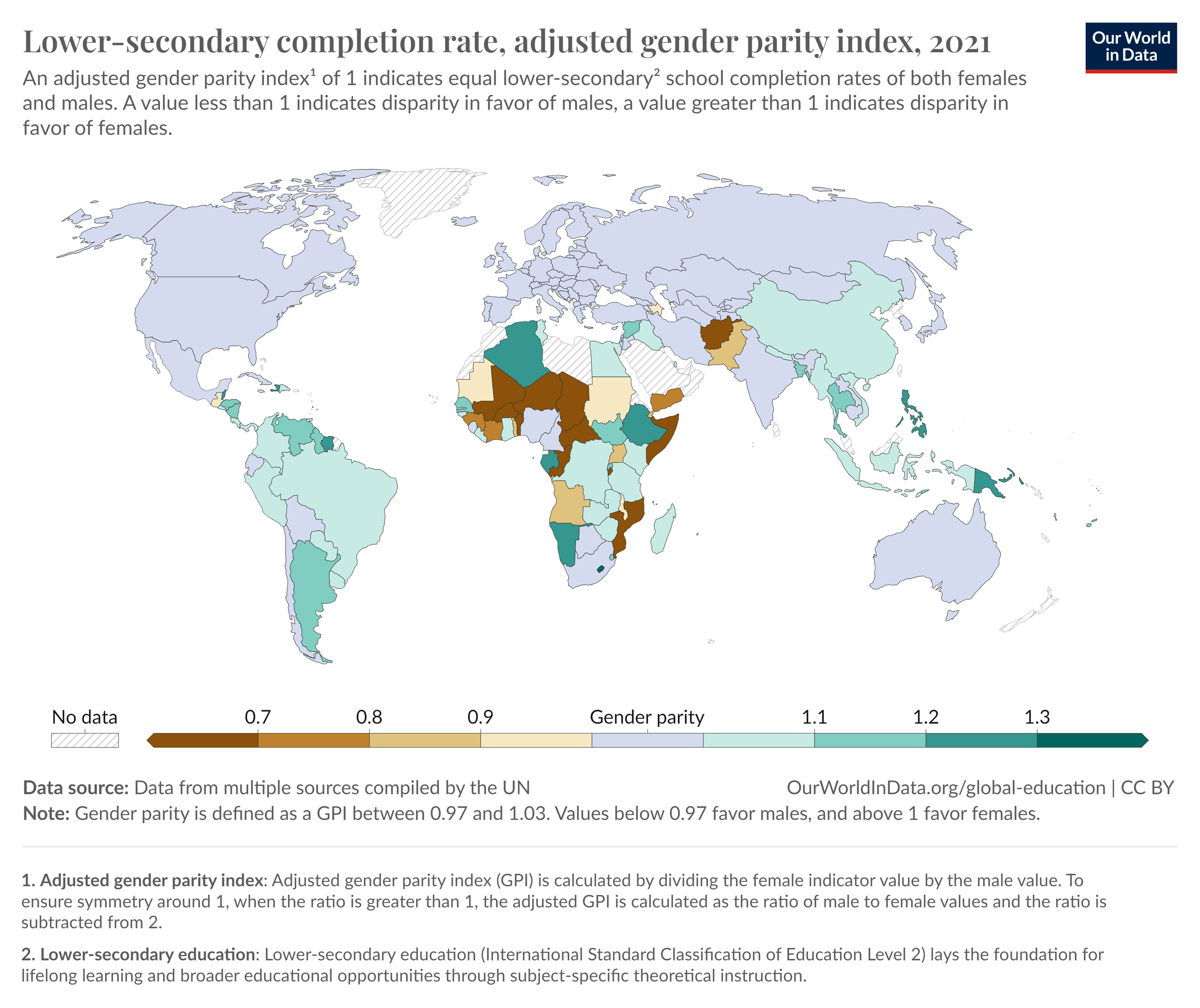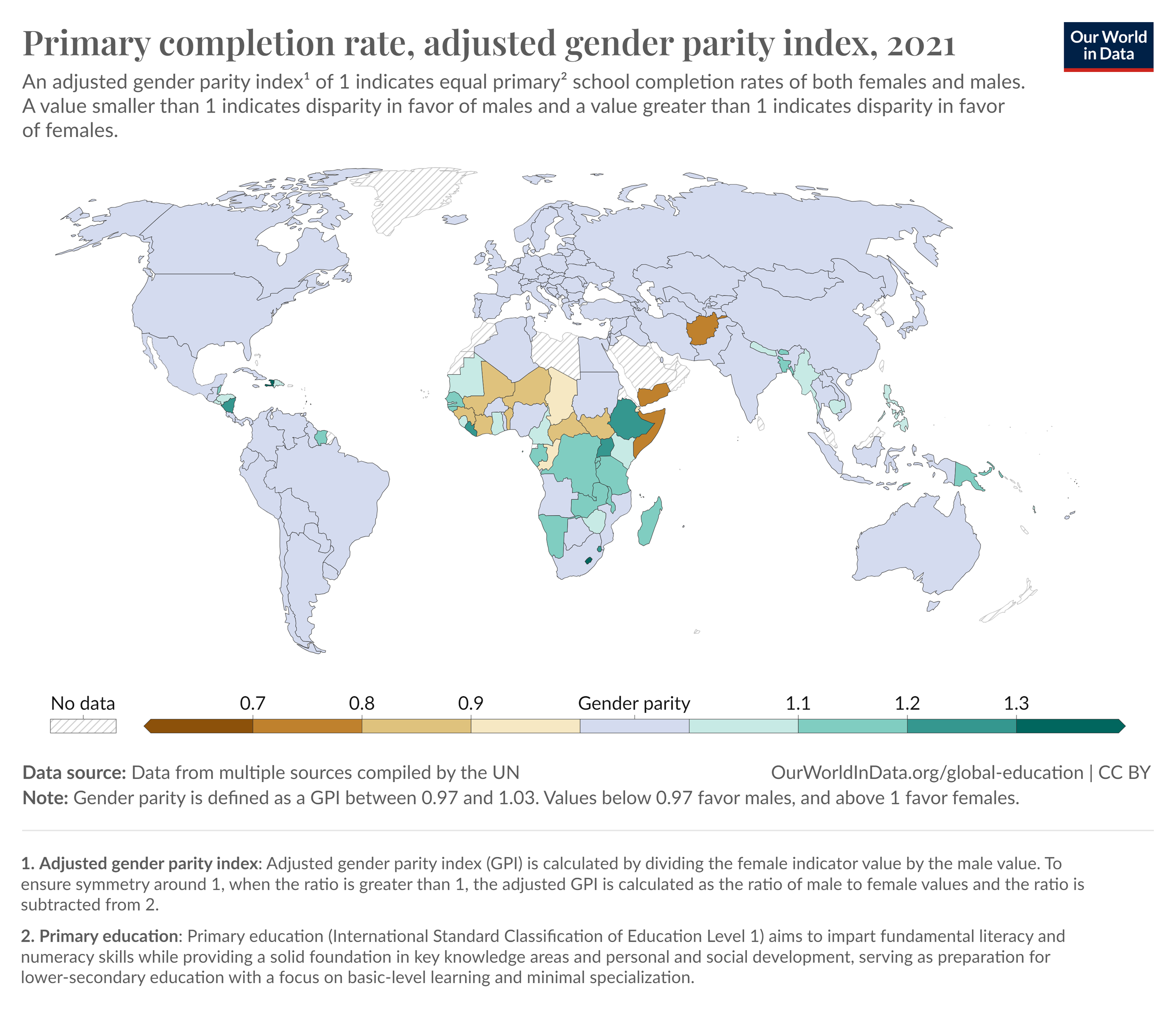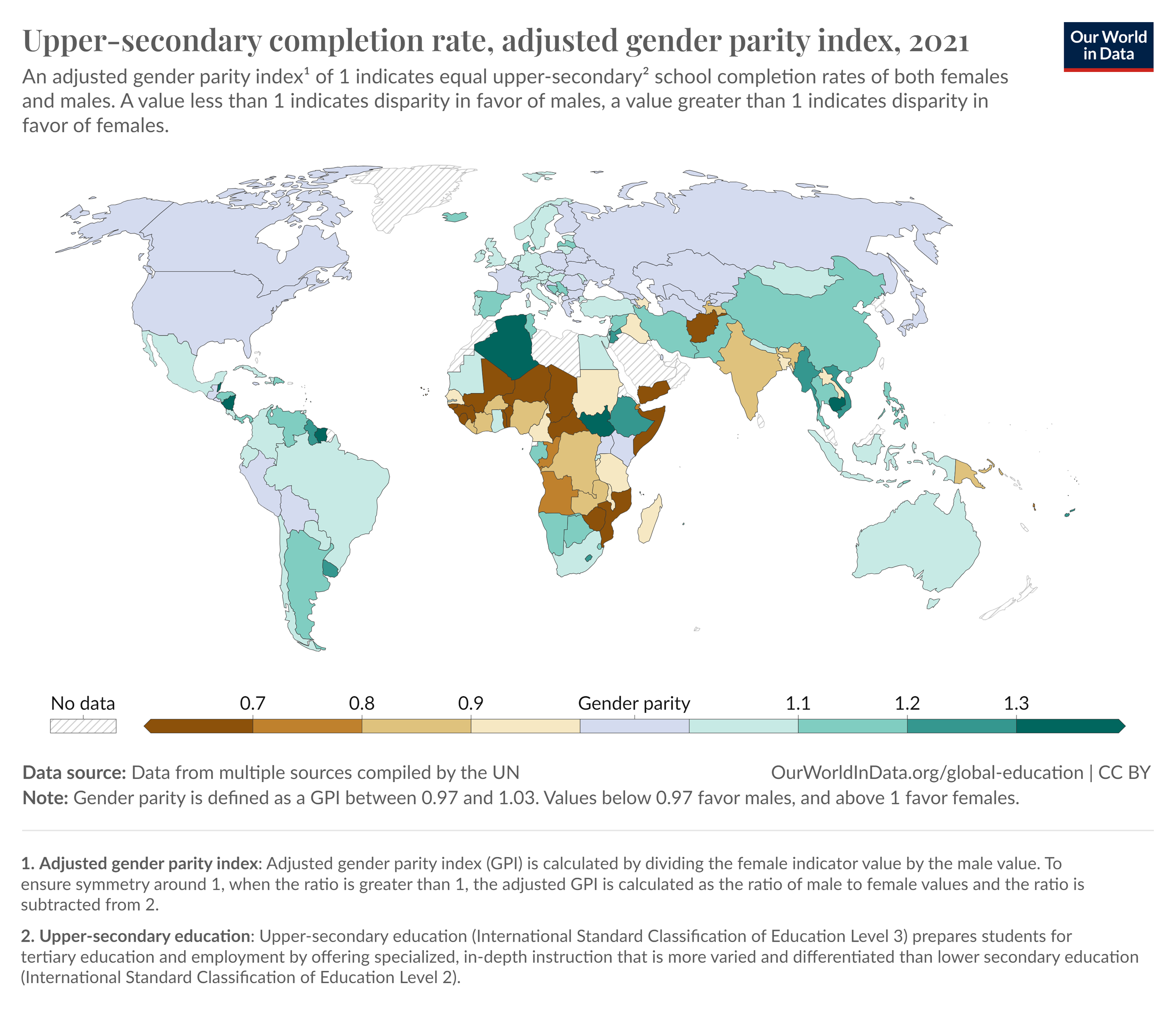SDG #4 is to “Ensure inclusive and equitable quality education and promote lifelong learning opportunities for all.”
Within SDG #4 are 10 targets, of which we here focus on Target 4.1:
By 2030, ensure that all girls and boys complete free, equitable and quality primary and secondary education leading to a relevant and effective learning outcome.
Target 4.1 has two indicators:
Indicator 4.1.1: Proportion of children and young people (a) in grade 2/3; (b) at the end of primary; and (c) at the end of lower secondary achieving at least a minimum proficiency level in (i) reading and (ii) Mathematics, by sex
Indicator 4.1.2: Completion rate (primary education, lower secondary education, upper secondary education)
Indicator 4.1.1 looks at minimum proficiency levels. This is the benchmark of basic knowledge, as measured by assessments, in this instance, for reading and mathematics. This indicator looks at reading and maths skills at three points: grade 2 and 3, end of primary schooling, and end of lower secondary. Performance level descriptors describe the knowledge and skills demonstrated by students at each. Performance level descriptors help us to assess students across countries.
Let's look at the respective descriptors for each grade.
Reading, grade 2: Being able to read and comprehend familiar written words and extract explicit information from sentences.
Reading, grade 3: Read written words aloud, understanding the meaning of sentences and short texts and identifying the topic.
Maths, grades 2/3: To make sense of, calculate numbers, and recognise shapes.
Reading, end of primary: Interpreting and giving explanations about the main and secondary ideas in different texts and establishing connections between main ideas and their own experiences.
Maths, end of primary: Basic measurement and reading and creating graphs.
Reading, end of lower secondary schooling: Establishing connections of the author’s intentions and reflecting and drawing conclusions based on the text.
Maths, end of lower secondary school: Solving maths problems, using tables and graphs, as well as algebra.
The data for assessing trends in students draws from a half-dozen surveys, some run by UNICEF and UNESCO. UNESCO the UN’s agency focused on education. The purpose of these assessments is to survey the effectiveness of learning outcomes. In some countries, it’s possible for a student to pass through grades without meeting the minimum proficiency levels.
International large-scale assessments test educational outcomes. An example is PIRLS (Progress in International Reading Literacy Study) for reading literacy in grade 4 students.
There are also several large-scale learning assessments at the national and regional level. UNESCO’s office in Santiago houses the bureau focused on education in the Latin American and Caribbean region. This includes the LLECE, the Spanish acronym for the Latin American Laboratory for Evaluation of the Quality of Education. The LLECE runs the ERCE, the Spanish acronym for the Regional Comparative and Explanatory Study, a major large-scale learning assessment for the region.
Other examples of large-scale learning assessments at the regional level include:
The benefit of these surveys is they serve as tools to provide the evidence which then goes toward making decisions to improve education. This then serves those children not attaining the expected learning outcomes for their grade level.
As of 2019, the proportion of students worldwide at the end of primary education meeting minimum proficiency levels in reading was 58%. This was down 1% since the start of the SDG period in 2015. For maths at the same level, the worldwide share of minimum proficiency was 44%, and 50% for lower secondary in mathematics.
To coincide with the adoption of the Sustainable Development Goals in 2015, the UN released a report, titled Education 2030. The Incheon Declaration and Framework for Action accompanied the report. This declaration's name came from the South Korean city hosting UNESCO’s World Education Forum 2015 conference. Education 2030 is an effort of several UN agencies besides UNESCO, including the UNDP, UNFPA, UNHCR, UNICEF, UN Women, the World Bank Group and ILO. The purposes of the report, as well as the Incheon Declaration and Framework for Action, reinforces the purpose of SDG #2.
The aim is to end Learning Poverty, which the World Bank defines as 10-year-olds being unable to read and understand a simple story.
The second indicator for this target looks at school completion of primary, lower secondary and upper secondary.
The completion rate for primary education worldwide was 87% as if 2021, up only 2% since 2015. Lower secondary completion rates were 77% in 2020, again up only 2% since 2015. Global upper secondary completion was 58% as of 2021, up 5% since 2015.


















































